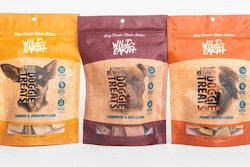
Before beginning development of a pet food or treat, detailed planning may help a company streamline the process and increase the probability of a successful launch. During her presentation at Petfood Essentials on Sept. 22, Laura Moran, vice president of product development and innovation for BARK, a pet treat and product home-delivery subscription service, recommended that developers use a product brief, a document that clearly, succinctly defines the requirements, specifications and goals for a new product.
“Creating a product brief upfront and being clear about what your product design is, that's going to speed up your product development process,” Moran said. “From personal experience, I can say that really taking the time dig in and get that right makes the entire product development experience run so much more smoothly and so much faster.“
To create that product brief, pet food companies may follow two complementary strategies. One key to new product development is finding a problem that hasn’t been solved, Moran said. The other strategy is to identify a product attribute that a competitor has not.
“That's good advice whether you are a brand-new startup, whether you are established brands looking to expand, or even a brand that needs to refresh itself,” she said.
Strategies for new pet food product development
Both these start-ups and established pet food brands can use five strategies to differentiate their products from competitors.
- Customer Service
“Prompt, friendly customer service can often differentiate a company from competitors that are known for being inattentive to support,” she said. “The most tangible benefit of the strategy is that the great customer service can and will justify a higher price point, or price point that no one questions.”
She pointed to Lego as an example of this strategy, and an audience member noted Chewy as example in the pet space.
- Convenience
Convenience includes a range of attributes from ease of use to location and widespread accessibility. Moran’s employer, BARK, used this strategy in a product launch, she said. They launched a home-delivered pet food packaged in pouches measured to meet each customer’s pet’s individual needs. BARK’s make feeding pets an appropriate portion an easier task than trying to scoop or weight the proper amount each day.
- Price
While focusing on affordability can quickly build a huge customer base, pet food companies need to avoid conveying an image of lower quality, Moran said. To avoid this pet food product developers may need to think about how their messaging explains why your product can be more affordable without sacrificing quality.
- Quality
Presenting a new pet food product as a superpremium option can also guide new product development and marketing. Qualities such as craftsmanship, high-quality materials and small-batch production can contribute to this quality strategy, Moran said.
- Differentiation
Innovating to create a unique product can set a product apart in the market, but potential customers may need proof.
“Consumers who value innovation will be attracted to your brand new product,” Moran said. “It will stand out in the market as something new and completely different. One potential limitation is that consumers can be confused by what your product is or how to use it.”
To counter this, pet food companies may need to do some consumer education and provide resources to help pet owners understand the potential benefits.
Whatever strategy a pet food product developer follows, starting with the end goal clearly developed can expedite the creation of new dog, cat and other pet food and treat products.
Petfood Essentials occurred the day before Petfood Forum commenced. Petfood Essentials provided an overview of the initial stages of pet food product development, including the first essential product positioning decisions, ingredients to consider and how to source and process them safely and with success.


















